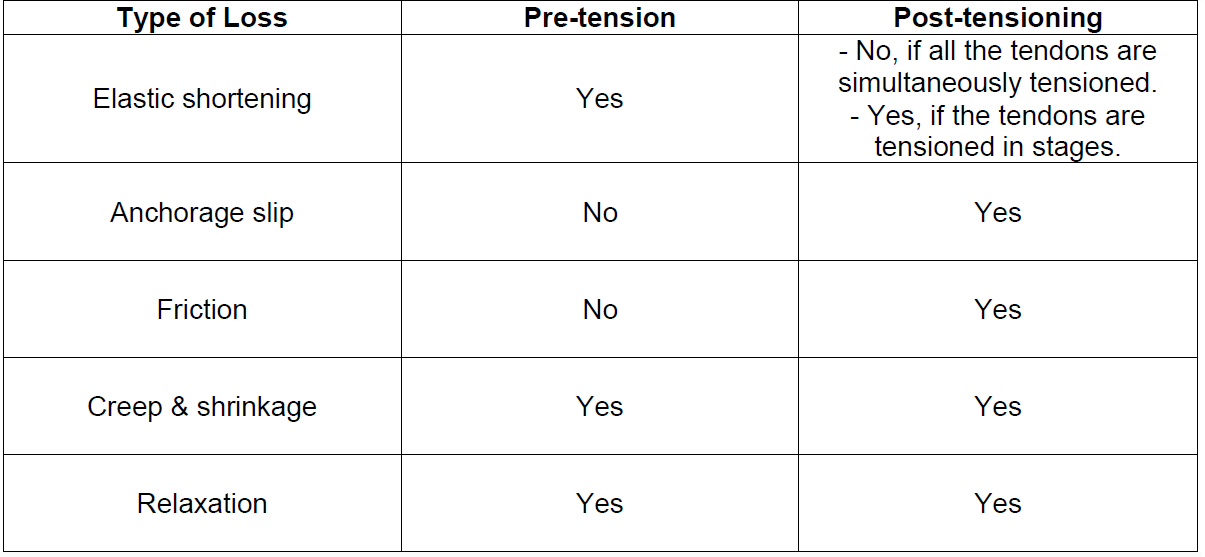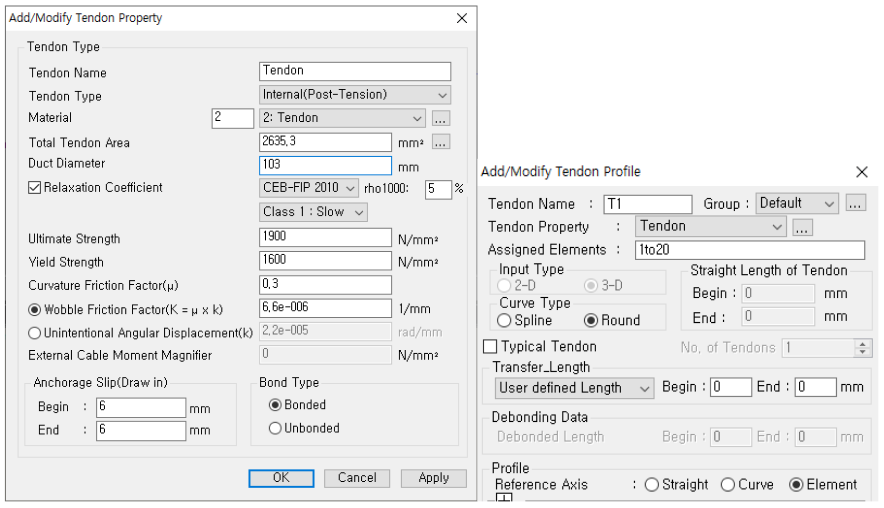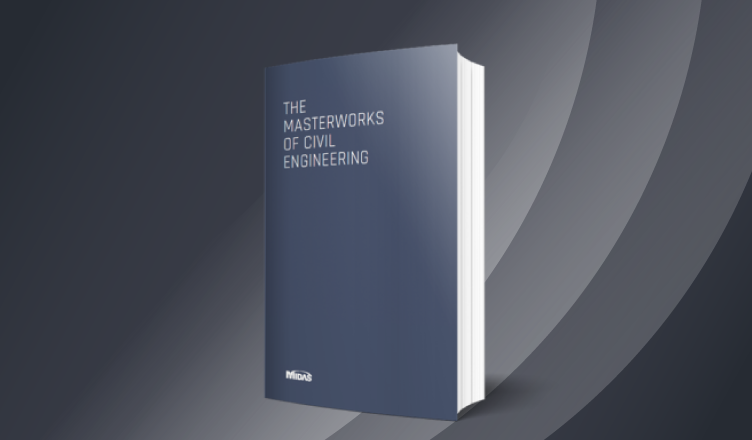Prestress does not remain constant with time. Prestress loss is nothing but the reduction of initial applied prestress loss to an effective value. Loss of prestressing affects the strength of members and also significantly affects the member’s serviceability. Prestress loss is classified into two types:
1. Immediate losses
- Elastic shortening of concrete
- Slip at anchorages immediately after prestressing
- Friction between tendon and duct, and wobble effect
2. Time-dependent losses
- Creep & shrinkage of concrete
- Relaxation of prestressing tendon
Losses by prestressing types

The probable reasons for the difference in prestress losses between manual calculation and midas Civil are as follows:
1. Improper definition of tendon property or tendon profile
2. Internal consideration of the software for prestress calculation
3. Consideration of transformed concrete section
4. Consideration of time-dependent properties of concrete
5. Sequence of prestressing considered
6. Prestressing force applied at one end or both ends
1. Improper definition of tendon property, tendon profile
The common mistakes in this dialogue box are:
- Assigning inappropriate tendon material, improper tendon type.
- Duct diameters to be of adequate size for tendon area
- Consideration of relaxation, entries for friction as well as wobble coefficients, and slip.
- Confirm the type of bonding of tendon with the duct.
- Improper tendon property.
- Incorrect number of assigned elements, curve type, and reference axis selection
- Make sure to input coordinates based on the reference axis selected, whether based on the element local axis or on the global axis system or along a specified curve. Curve type, Spline is selected, then the tendon curve would pass smoothly connecting the entered coordinates i.e. P1, P2, P3, and P4 as shown in the figure below. No abrupt changes in angles at these locations.
Curve type, Spline is selected, then the tendon curve would pass smoothly connecting the entered coordinates i.e. P1, P2, P3, and P4 as shown in the figure below. No abrupt changes in angles at these locations.
Curve type, Round is selected, radius R has to be entered and this curve would have lines P1-P2 and P2-P3 as tangents as shown in the figure above, where P1, P2, and P3 are the coordinates entered. Unless R is 0, the tendon will not pass through P2.
2. Internal considerations of software for Prestress calculation
Internally, midas Civil divides the elements with tendon profile assigned to them into 4 parts and the effects of prestressing are calculated at a total of 5 points (inclusive of i and j ends). So, when these divisions are not ending at locations where the tendon profile is having a major change in the profile equation (Say, at the curvature of a parabolic profile), then the loss calculations wouldn’t be at their most accurate value.

3. Consideration of transformed concrete section
Manual calculations are in general done considering the gross concrete section properties. The variation in section property due to the tendon is neglected, whereas midas Civil accounts for the change in property due to the presence of tendons and considers an equivalent transformed section. However, if this change in section property is to be neglected, the same could be done under Analysis > Analysis Control > Construction stage > Beam Section Property Changes as shown below: 
4. Consideration of time-dependent properties of concrete
To consider the time-dependent effects such as variation in concrete compressive strength, creep, and shrinkage, appropriate parameters would have to be defined, linked with the base material, and assigned to appropriate elements (Say, only longitudinal and not transverse). Furthermore, the time-dependent effects are to be considered in the construction stage analysis control. For defining and linking these parameters with the base material, options, as highlighted in the image, are used.
Under Construction Stage analysis control > Time-Dependent Effect Control
the effects of time-dependent behavior like, creep, shrinkage, internal creep calculation steps, etc. could be controlled. The implications of common options are explained beside the image below.


Elastic shortening when manually calculated is usually based on constant initial force. Where in with the software, elastic shortening could be calculated with the force variation as well, which might vary the software results as compared to manual calculations.
5. Sequence of prestressing considered
The age of concrete when the tendons are prestressed, the sequence of prestressing should be carefully assigned in the construction stage. For example, stressing 4 cables at the same instance yields a different result as compared to stressing each cable with a small time gap.
To prestress the tendons in sequence, ‘Additional steps’ are to be defined in the Compose
Construction Stage dialogue box. The tendons can be stressed or the load group for each tendon could be activated at these defined additional step time duration.
As highlighted in the image above, under step (1) define the additional steps for time duration when a particular tendon would be stressed. Under step (2), the tendon’s prestressed load group is to be activated at the specified time step under the Load tab. Doing so would yield different results as compared to having all the 5 tendons stressed at the same instance.
6. Pre-stressing force applied at one end or both ends
Jacking force could be applied at both ends or only one end. Providing inappropriate choices would lead to different prestressing force applications as compared to what is intended and the results could vary from manual calculations. This option is highlighted in the figure below.

Besides the above-mentioned reasons, there can be other manual input errors, like incorrect force value, mistakenly entering ‘Stress’ values when the ‘Force’ option is selected, and so on. With proper inputs and assumptions, the software results and manual
calculations would greatly be comparable.
 Get Started midas Civil
Get Started midas Civil
 Featured blog of this week
Featured blog of this week








/345%20240/Comparison%20of%20Theoretical%20and%20Software%20Results%20of%20Prestressed%20Tendon%20Loss.png)
/345%20240/Best%20Practices%20When%20Considering%20Post-Tensioned%20Girder%20Bridges.png)
/345%20240/Structural%20analysis%20of%20Incrementally%20Launched%20bridge.png)